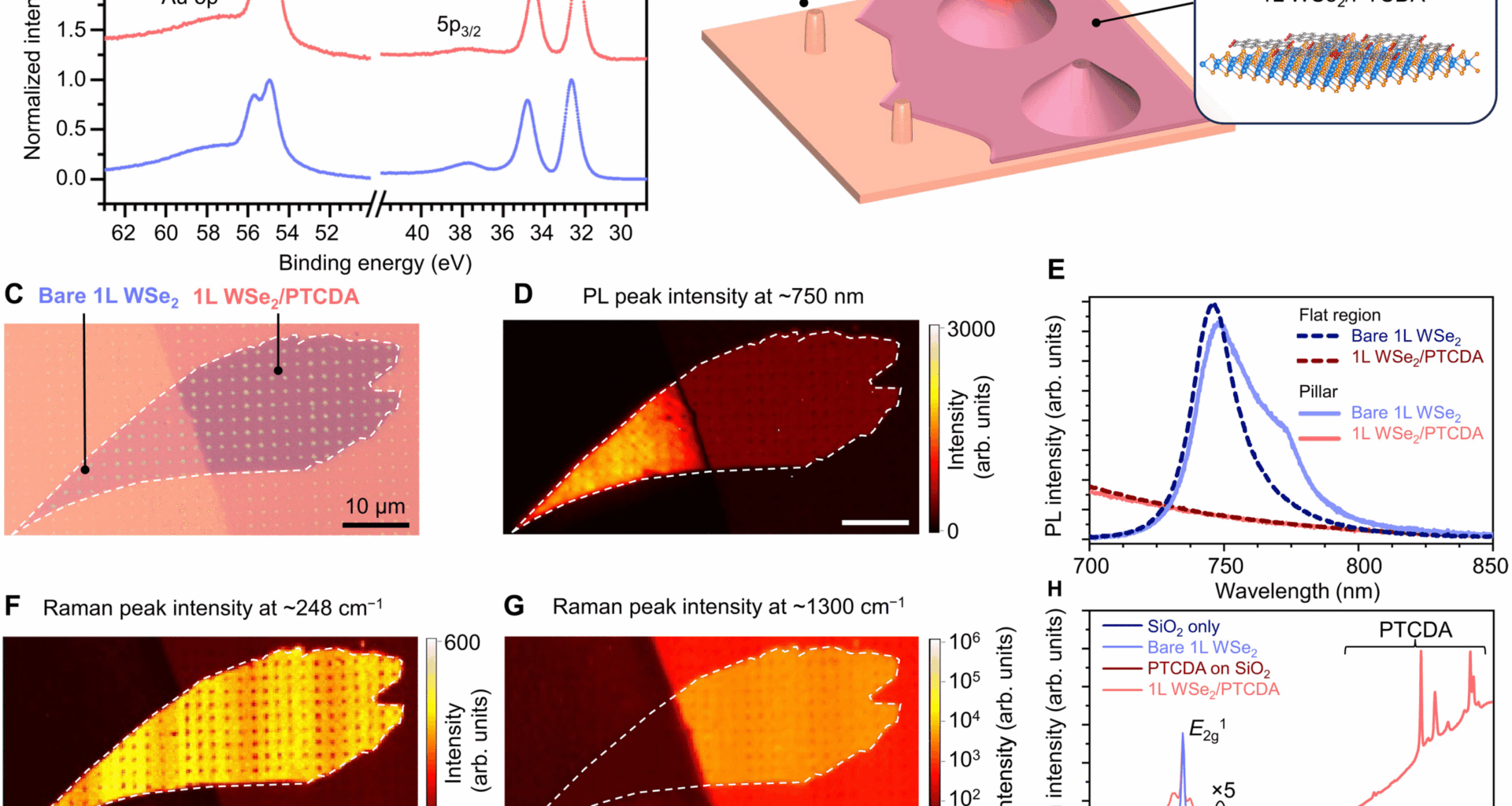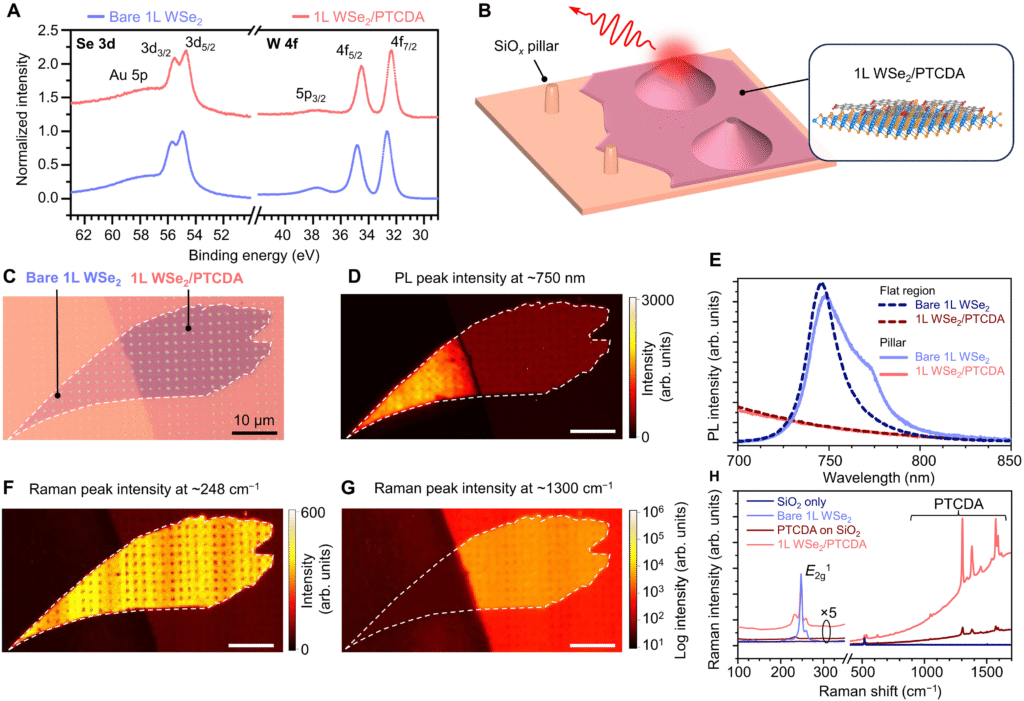Engineers at Northwestern University have developed a new strategy that makes quantum light sources more consistent and reliable. The team coated an atomically thin semiconductor with a sheetlike organic molecule, which boosted the spectral purity of the emitted photons by 87%. This new research, published in the journal Science Advances, is a step toward building reliable and efficient quantum technologies for secure communications and ultra-precise sensors.
The study, led by Mark C. Hersam, Chair of the Department of Materials Science and Engineering at Northwestern, focused on two-dimensional semiconductor tungsten diselenide. The material can host atomic-scale defects that emit individual photons, but its all-surface nature leaves these emitters exposed to atmospheric contaminants, which causes unwanted variability. The team coated both sides of the tungsten diselenide with an organic molecule called PTCDA, deposited in a vacuum chamber to ensure the coating remained uniform and protected the emitters.
By protecting the material from environmental disturbances, the coating also shifted the photons to a lower energy in a uniform and controlled way. The researchers are now planning to investigate other semiconducting materials and molecular coatings. The team also plans to use an electric current to drive quantum emission, which will facilitate networking of quantum computers into a quantum internet. The study was primarily supported by the U.S. Department of Energy, with additional partial support from the National Science Foundation and the Army Research Office.
Read the full announcement from Northwestern University here and the research article in Science Advances here.
October 6, 2025



